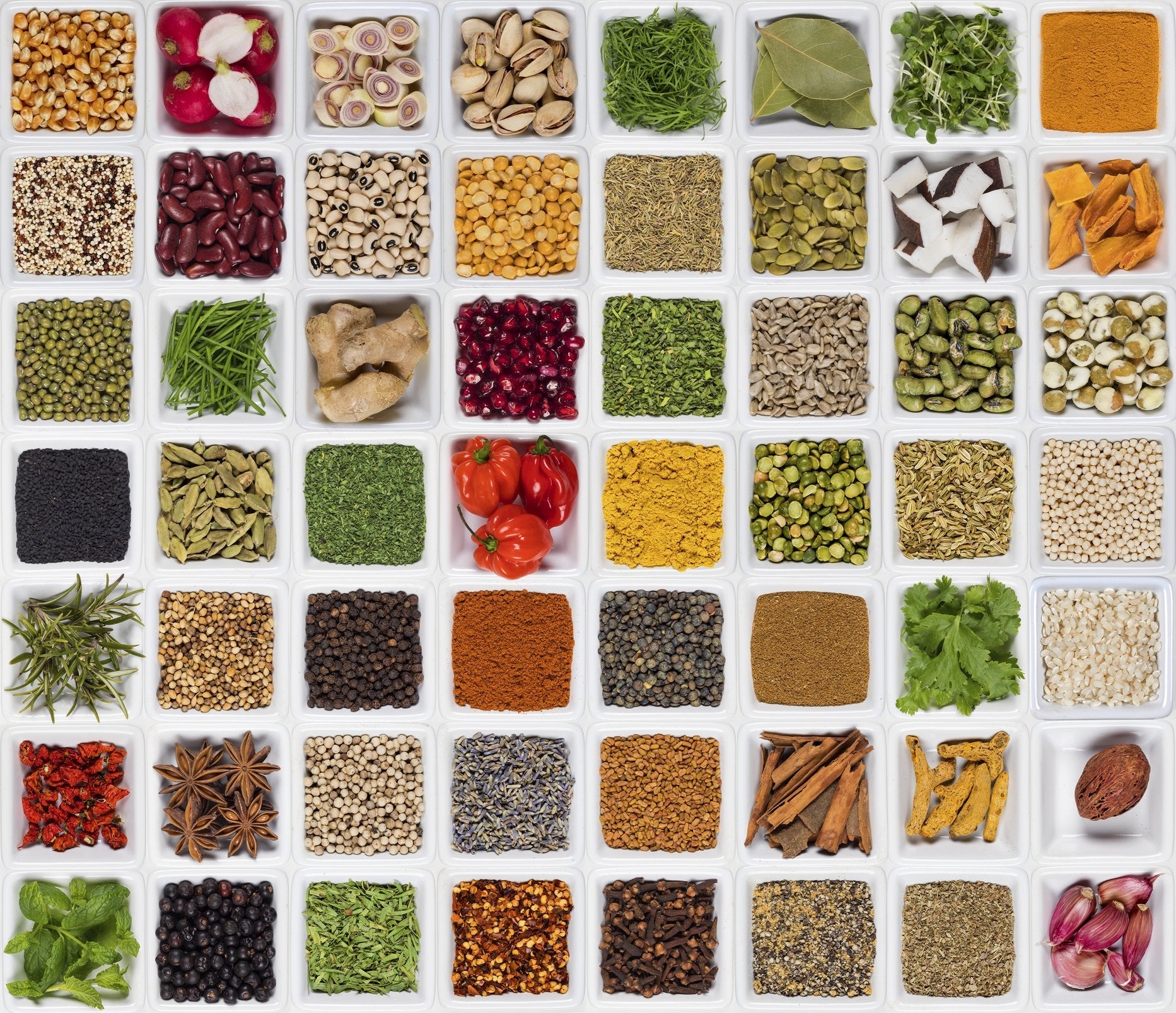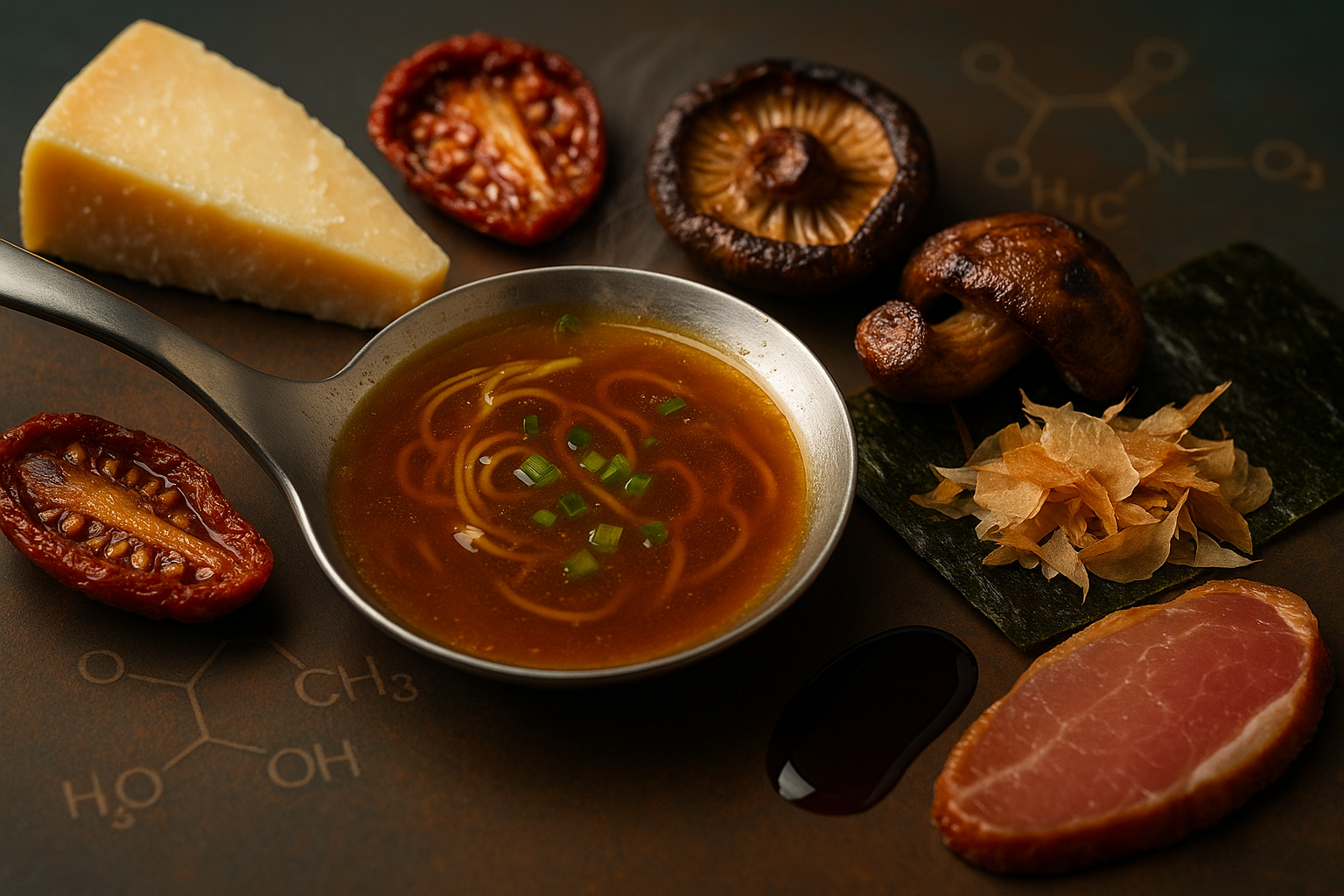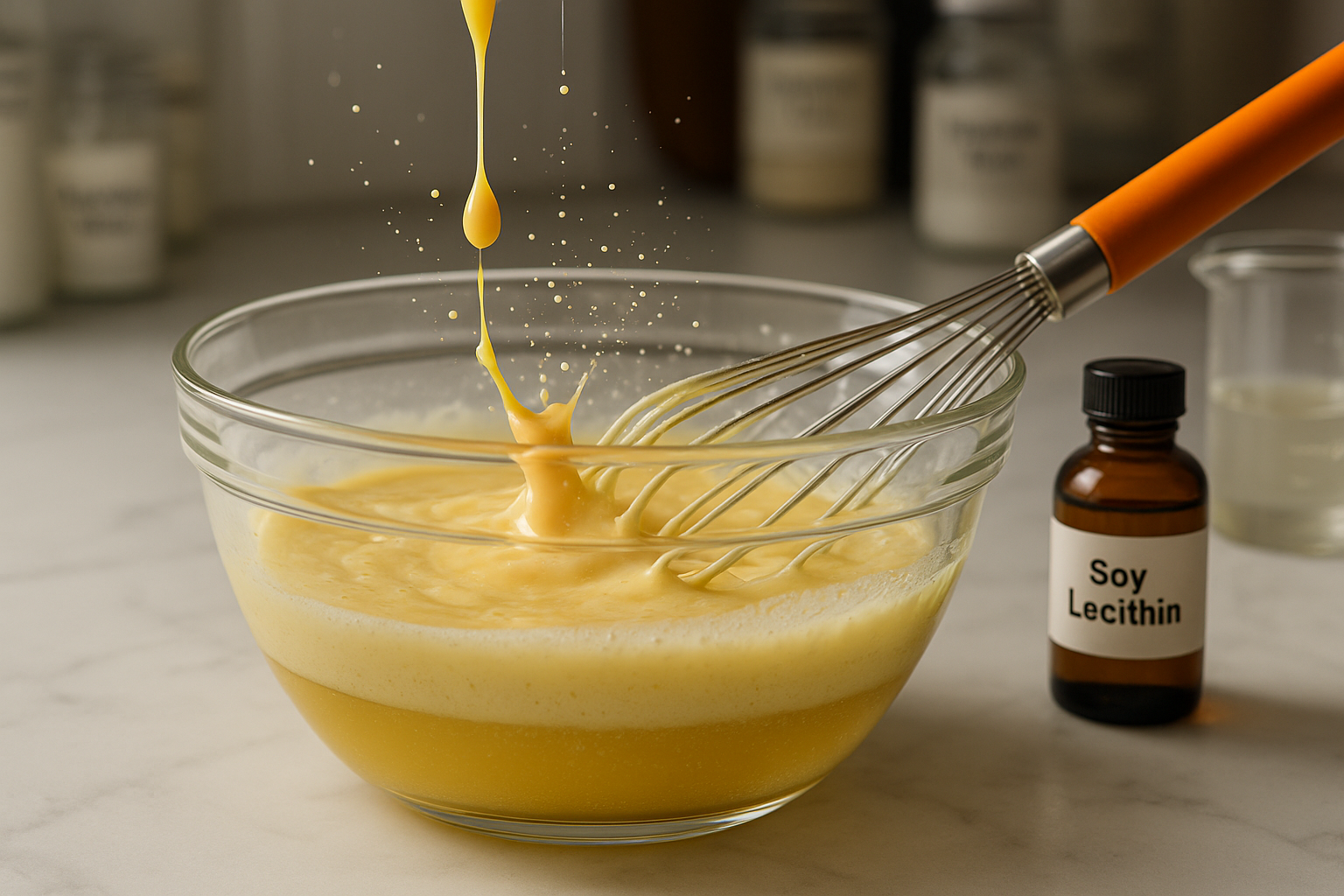
Unlocking the Secrets of Flavor of Food
SUBSCRIBE TO OUR BLOG
Promotions, new products, and recipes.
Welcome to the flavorful world of food, where our taste buds embark on a sensory roller coaster ride of delight! Ever wondered how certain dishes manage to tantalize your senses so effortlessly? It’s time to unlock the secrets of the flavor of food and dive into the enchanting realm of natural and artificial flavors, the art of flavor pairing, and the role of flavorists who masterfully craft those irresistible tastes. Are you ready to embark on this flavorful adventure?
Key Takeaways
-
Unlock the secrets of flavor and tantalize your taste buds with sweet, sour, salty, bitter, and umami!
-
Discover how to make dishes divine by exploring complementary and contrasting flavors from around the world.
-
Unleash flavorists’ expertise in creating unique, safe, and natural flavors, they have all the answers for tastebud tantalization!
The Science of Flavor

A delicious array of flavors awaits those who take a moment to savor their favorite dish. Through the combination of taste, smell, and texture - each adding its own unique flair- flavor profiles come alive for us to enjoy. Our understanding of these sensations is affected by many elements including our palate which detect five distinct tastes: sweet, sour salty, bitter, and umami. Also what we can smell plays an important role in identifying certain distinctive flavors as does mouthfeel while eating food giving another dimension to how it’s perceived. So let’s Investigate this fascinating world between natural and artificial flavoring with vanilla being one favored amongst them all!
Taste Buds and the Five Tastes
The five basic tastes - sweet, sour, salty, bitter, and umami – work together with flavorants to create combined chemical sensations. While these flavors can elevate the most uncomplicated dishes one eats on a daily basis. Food manufacturers employ certain components like animal by-products and glycerin in order for their products to maintain an even level of flavor consistency that some may not appreciate. This particular combination has caught the attention of countries from within the European Union who are fussier when it comes to what goes into their meals concerning taste enhancement and hydrocolloid enhancements.
Aroma and Smell
The perception of flavor is greatly enhanced through the sense of smell. Our noses are essential in capturing a dish’s essence. Aromas, these combined chemical sensations composed of fragrant and flavorful compounds, stimulate taste buds which can make one salivate with anticipation. Artificial flavors that have been produced using diacetyl and acetoin - both sweet products from sugar fermentation- add yet another dimension to this complex world. Even if alterations to an original recipe occur due to artificial flavors it will always be our olfactory sense that determines its actual flavor or tastes.
Texture and Mouthfeel
Flavor perception is heavily impacted by texture and mouthfeel, two physical characteristics that often get overlooked. These qualities are sensed through the trigeminal nerves which act like taste buds in the throat. They recognize temperature changes, chemical irritants as well as other aspects of a dish’s structure.
Mouth feel takes into account what we physically experience with our tastebuds while texture looks at visuals and touch when consuming food, together these combine to make eating an unforgettable event! Flavor encompasses aromas alongside both its elements so it can be truly memorable for all involved senses.
Natural vs. Artificial Flavors

In terms of flavor, natural and artificial varieties are the main contenders, each offering distinctive features that make them advantageous for use in food production. Natural flavors sourced from plants or animals are known to be intricate with a complex taste profile while those synthesized in laboratories provide a less varied experience when it comes to tastes. Vanilla flavoring stands out among all these choices because regardless of whether its sources stem naturally or artificially, its molecules remain almost indistinguishable between both types.
To have an even better grasp of this amazing world of various natural and synthetic ingredients used as flavoring agents we need to delve deeper into their origin stories, manufacturing processes employed by the industry players plus regulatory frameworks that control such activities.
Natural Flavor Origins
Natural flavors can be sourced from a wide variety of places, such as plant and animal materials, essential oils, oleoresins, protein hydrolysate distillates, or natural flavor extracts. All these sources contain particular flavoring ingredients that are consistent with the authenticity of any given type of flavor. These individual components combine together to produce an array of sensations that nature provides for us through various extraction processes.
Even European legislation is allowing manmade GMO-based products within their jurisdiction when it comes to extracting certain types of flavorings. Clearly demonstrating how numerous the origins may be in regards tonaturalflavorsof many varieties. The possibilities supplied by natural tastes are far-reaching as all their respective elements are put together!
Artificial Flavor Creation
The creation of artificial flavors is an intricate process in which natural aroma compounds are blended to either intensify or copy the flavor that already exists. As a result, these artificially produced tastes can closely resemble their naturally occurring counterparts due to how they modify existing taste profiles. Despite being man-made, great lengths go into ensuring the safety and quality control of each one so as not to provide any adverse effect on consumers when opting for synthetic alternatives rather than real flavors. It’s really quite remarkable what chemical flavor experts have accomplished in terms of developing these imitation blends!
Safety and Regulations
In the food industry, consumer safety is of the utmost importance in relation to natural and artificial flavors. Standards are enforced by regulations such as those laid out by The Code of Federal Regulations within America. Plus Regulation (EC) No 1334/2008 which applies across Europe.
Compliance with these ensures flavorists can create captivating concoctions that tantalize our tongues without compromising health concerns.
Through using their expertise in compliant ingredients, they provide us with delicious yet safe flavors that satisfy even the most demanding palates!
The Art of Flavor Pairing

Pairing flavors such as anise and cinnamon opens up a world of possibilities for unique dishes.
Exploring flavor combinations can open up a world of possibilities and provide food lovers with unique dishes that are truly delicious. By knowing the principles behind pairing flavors, we can get creative in the kitchen and unlock all of our ingredients’ potential.
Whether it’s examining how complementary tastes work together, experimenting with contrasting components, or embracing culturally driven associations between taste pairings. Learning about ways to fuse different flavors is a must for those hoping to level up their cooking skills!
Complementary Flavors
Flavor combinations are like two dancers seamlessly intertwining to create a delightful ensemble. Sweet and sour, salty and sweet, spicy and tangy, creamy with crunch, these mixtures of tastes bring out the best in one another as they provide layers that captivate your palate. Knowing how different flavors complement each other can help us turn our dishes into delectable works of art! So don’t be scared to explore the perfect harmony between complementary flavors for an extraordinary experience next time you cook up something tasty.
Contrasting Flavors
Cooking with contrasting flavors gives one the opportunity to explore an exciting range of unique flavor combinations. The harmonious blend of sweet, salty, spicy, sour, and savory notes presents a thrilling taste sensation that challenges your palate like riding on a roller coaster! Experimentation is encouraged when it comes to finding the right balance between these distinct flavors – if done correctly each flavor will stand out while simultaneously complimenting all others involved.
No need to be afraid. Embracing unexpected taste experiences can open up new realms of possibilities in cooking that tantalize both you and those lucky enough to partake in them! It’s essential Not only for good results but also for an enjoyable culinary experience, striking just the right harmony among conflicting tastes might at first seem a daunting yet ultimately rewarding task. Getting there though takes practice- so do take some time experimenting with different flavor pairings until perfection is reached: Then watch as people around you revel joyfully over their plates (and maybe even ask what recipe are they enjoying!).
Cultural Influences on Flavor Pairings
Cultural influences can have a major effect on the flavor pairings we enjoy. Over time, cultures around the world have developed their own distinct combinations of flavors that are influenced by various elements like topography, weather conditions, plant life, and animal life as well as religion. This has resulted in an immense variety of unique tastes such as:
-
Indian cuisine utilizing fragrant spices;
-
Japanese food which consists of delicate harmonizing between sweet/sour/umami characteristics;
-
Mexican dishes are characterized by bold hot sensations; - French recipes exhibit creamy tasty mixtures, and Mediterranean meals feature tart citrusy ingredients.
Experimenting with different cultural impacts on blend profiles may deepen our culinary awareness to extend beyond what we currently know or experience, providing us with new gastronomic delights.
Enhancing Food Flavors

Spices add flavors to increase our appreciation for culinary creations.
Exploring the depths of flavor is a thrilling and adventurous journey to take. Utilizing various methods such as sweeteners, acidulants, herbs, and spices or cooking techniques can vastly increase our appreciation for culinary creations. From adding a pinch of salt to creating complexity in dishes through unique ingredients. Flavor enhancement has many aspects that challenge taste buds and allow us to discover new heights when it comes to enjoyment while dining out or at home.
In order to explore this realm Let’s uncover its secrets on how we can make our flavors even more exquisite than before by looking into enhancers like flavoring agents, seasoning boosters, or freshness preservers which have been designed specifically to bring an extra dimension to meals being served up every day. No matter what level you may currently be operating from understanding these small but mighty additions could lead your tastes towards some truly remarkable experiences when indulging in gastronomy!
Flavor Enhancers
Food additives, such as flavor enhancers, can make a dish all the more delicious. Popular examples of these seasonings are Monosodium Glutamate (MSG), honey, citric acid, corn syrup, and salt, each one capable of adding depth to the taste and smell of food. As well as intensifying flavors in our meals they also increase overall sensory pleasure which results in every bite being an enjoyable experience.
Sweeteners, Acidulants, and Salt Substitutes
The flavors of a dish can be elevated to exceptional standards with the addition of sweeteners, acidulants, and salt substitutes. These ingredients add sweetness, tartness, or saltiness to achieve that perfect balance. Sugars and honey are common examples while artificial sweeteners such as citric acid, malic acid, and lactic acids satisfy our cravings without compromising on taste. For those looking for more savory options potassium chloride, sodium chloride and monosodium glutamate (a type of sodium salt derived from amino acids) offer an alternative form of traditional salting methods, allowing us to craft dishes according to our desired tastes whilst still leaving room for experimentation within recipes!
Cooking Techniques
Cooking techniques, similar to the work of an artistic painter, can uncover and showcase the tastes of our ingredients in a unique way. Roasting, grilling, or sautéing with high heat will bring out those natural flavors while also creating caramelization on meats for that perfect crunchy outside layer. Adding acids such as lemon juice or vinegar provides balance in flavor which brings about amazing results when combined with herbs and spices added for depth and complexity..
Experimentation is key! It allows us to see how far we can push these delicious components into something truly special, unlocking their full potential through every dish.
The Role of Flavorists in the Food Industry
 food science flavorist testing out new flavors.">
food science flavorist testing out new flavors.">
A food science flavorist testing out new flavors.
The flavor industry relies heavily on the expertise of flavorists to craft irresistible flavors for food and beverage products. Skilled in both sensory analysis and chemistry, these professionals combine their knowledge to conceive innovative recipes that will tantalize taste buds while adhering to safety regulations. As such, they are an essential component when it comes to new product development based on customer preferences or market trends.
Training is key for these experts who make sure each creation has all the necessary qualifications. Understanding and mastering techniques related not only to chemical synthesis but also to evaluating consumer appeal is part of this process too. In short, by using a blend of artistry backed up by science—flavorists concoct delightful tastes!
Training and Expertise
Flavorists possess an extensive understanding of flavor chemistry, sensory analysis, and the regulatory framework in which food products operate. Their knowledge of these fields allows them to meld art and science into creative yet effective combinations that excite our taste buds, thus providing us with unique flavors we can enjoy on a daily basis. With their deep familiarity regarding all aspects related to flavor development, they are able to navigate any challenge that arises while ensuring deliciousness continues for many years ahead.
Developing New Flavors
Flavorists are an integral part of the food industry, continually exploring new ideas and leading flavor innovation. Crafting unique flavors requires careful consideration. From gauging client requests to selecting chemical ingredients for formulating mixtures that best capture their desired taste profile. These concoctions must be tasted by clients before final approval is granted, this iterative process may take several attempts to get just right! When done correctly it can result in a remarkable gastronomic experience for all involved. Flavor creation takes dedication and skillful execution – something which these experts excel at!
Challenges and Trends in Flavor Development
Flavorists face ever-evolving obstacles and tendencies in the field of flavor development, which they must confront to craft enjoyable tastes. These include creating flavors that are safe yet palatable for consumers, crafting unique profiles designed to stand out from competitors, focusing on innovative techniques through technological advancement as well and meeting a heightened demand for healthy and natural ingredients used in flavoring products.
To best serve client’s needs and keep up with their changing preferences, these professionals actively push boundaries by staying ahead of trends, thus resulting in extraordinary taste experiences never before seen or tasted. They do this while remaining committed to innovation so that each recipe lives up to its full potential when it comes time served at tables all around the world.
The success rate of Flavorists lies not only in how proficiently they can develop new recipes but also their ability to adjust course rapidly when needed - ensuring customer satisfaction is reached ultimately without sacrificing what makes something truly flavorful: thoughtfully crafted blends enhanced by naturally sourced compounds chosen wisely.

Flavor science involves the marriage between taste and smell.
The science of flavor involves the marriage between taste and smell to provide us with a unique gustatory experience. Sweet, sour, salty, bitter, and umami are five tastes that excite our palates while aromas contribute greatly as well in creating this impression. There is a clear distinction between natural flavors from freshly picked sources and artificial ones made synthetically. Natural flavors usually present more complexity compared to their artificially made counterparts with their one-dimensional character. Flavor pairing showcases artistry with different combinations used for enhanced pleasure just by simply utilizing enhancers like sweeteners plus salt substitutes combined with various cooking techniques can do wonders too! All together these elements blend harmoniously into an unforgettable gastronomical occasion which results in far tastier food preparation than before.
Summary
Discover the world of flavor with us, from comprehending how flavors are produced to learning about pairings. We have unraveled the mysteries behind food and artificial/natural tastes while appreciating flavorists’ contribution to this industry. Embark on a flavorful exploration as we highlight the complexity of crafting different essences that tantalize our taste buds, enabling delightful culinary experiences along the way! It’s time to immerse yourself in an alluring variety of flavors life has to offer so go ahead and savor them!
Frequently Asked Questions
What are the 5 flavors of food?
Our taste buds are stimulated by five primary flavors: sweet, salty, sour, bitter, and umami. Together they shape our overall perception of flavor and make eating a pleasurable experience.
What is a word for food flavor?
The flavor of food can be described by words such as tang, relish, savor, and nip. Which are all different yet distinct tastes. Dull dishes stand in opposition to tart flavors like lemon while sweet foods add a contrast with their honeyed notes.
Is it flavour or flavor in food?
No matter which part of the world you’re in, it’s always flavour or flavor - the two are interchangeable when it comes to food!
The only difference is the spelling: Americans favor ‘flavor’, while Brits and Indians opt for ‘flavour’.
What's the science behind flavor?
The union of taste and smell gives us flavor - this distinctive experience is created by the unique mixture of sweet, sour, salty, and bitter tastes plus aromas and textures. Flavor plays an important part in our pleasure while consuming food. It emerges from the components used to make a dish as well as how they are prepared or served in different settings.
Humans have only five distinct areas on their tongue when perceiving what we call ‘taste’; namely sweetness, saltiness, bitterness acidity (sourness), and umami flavors – all interconnected with aroma creating complex combinations that make up flavor.
What are the five tastes that tantalize the taste buds?
Let your taste buds be tantalized by the five classic tastes: sweet, sour, salty, bitter, and umami.
Sweet and sour provide a sugary and acidic zing, while saltiness and bitterness have a more pungent flavor.
Umami rounds out the classic tastes with its savory richness.


|
About the Author Ed is the founder of Cape Crystal Brands, editor of the Beginner’s Guide to Hydrocolloids, and a passionate advocate for making food science accessible to all. Discover premium ingredients, expert resources, and free formulation tools at capecrystalbrands.com/tools. — Ed |
Enjoyed this post? Subscribe to The Crystal Scoop
Food-science tips, ingredient know-how, and recipes. No spam—unsubscribe anytime.
- Choosing a selection results in a full page refresh.



